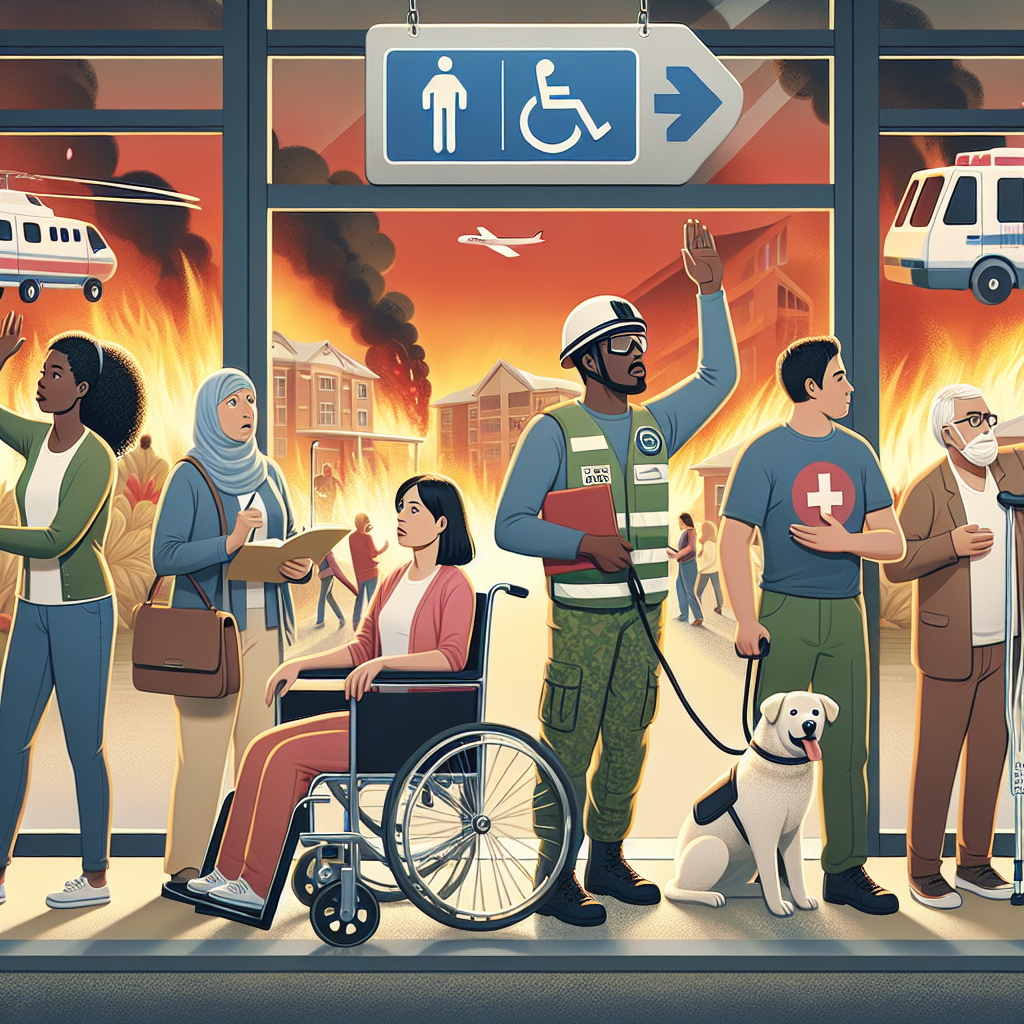Imagine you’re going about your day, and suddenly an unexpected emergency leaves you unable to work or perform your daily activities. In those challenging moments, what would you do? This article explores the concept of Emergency Disability, highlighting how it can profoundly impact individuals and their ability to cope with unforeseen circumstances. Whether it’s a sudden illness, accident, or any other life-altering event, understanding the resources and support available during these times is crucial. Discover the key considerations and assistance that can help you navigate the complexities of emergency disability, ensuring you have the necessary help and guidance when you need it most.
Emergency Disability
Welcome to this comprehensive guide on emergency disability. In this article, we will explore the definition, causes, types, signs and symptoms, protocol, preparation, assistance programs, resources, and planning for the future when it comes to emergency disabilities. Our aim is to provide you with a wealth of information that will be valuable in navigating this challenging situation. So, let’s dive in!

Definition
Emergency disability refers to a sudden or unexpected loss of physical or mental abilities that significantly impact an individual’s daily life and normal functioning. Such disabilities can occur due to a variety of reasons, including accidents, injuries, medical conditions, or sudden-onset illnesses. These disabilities can be temporary or permanent, and they require immediate attention and support to ensure the well-being and safety of the affected individual.
Causes of Emergency Disabilities
Numerous factors can contribute to the occurrence of emergency disabilities. Accidents, whether at home, work, or during recreational activities, are a common cause. Falls, sports injuries, and vehicle accidents can result in serious disabilities, ranging from fractures and traumatic brain injuries to spinal cord damage. Additionally, sudden-onset medical conditions like strokes, heart attacks, or severe allergic reactions can lead to emergency disabilities.
Types of Emergency Disabilities
Emergency disabilities can manifest in various forms, affecting different parts of the body and mental faculties. Physical disabilities may include mobility impairments, loss of vision or hearing, paralysis, or limb amputations. Cognitive disabilities may involve memory loss, difficulty with concentration, or confusion. Mental health emergencies, such as acute episodes of anxiety or depression, can also fall under this category.
Signs and Symptoms
Recognizing the signs and symptoms of emergency disabilities is crucial for prompt intervention and assistance. Physical signs may include severe pain, visible injuries, difficulty moving, or changes in sensory perception. Cognitive symptoms can manifest as confusion, disorientation, impaired speech, or memory lapses. Emotional distress, intense mood swings, or suicidal thoughts may indicate a mental health emergency. It is important to remain vigilant and seek immediate medical attention if these signs and symptoms arise.

Emergency Disability Protocol
In any emergency disability situation, it is essential to follow a protocol to ensure the best possible outcome. Firstly, contact emergency services or call 911 to report the situation and provide accurate information about the individual’s condition. Provide clear instructions on the person’s location and any immediate medical needs. It is advisable to stay on the line until help arrives, answering any questions from the dispatcher. Additionally, if trained in CPR or first aid, administer appropriate assistance within your capabilities.
Emergency Disability Preparation
Being prepared for emergency disabilities can significantly alleviate stress and improve outcomes. It is crucial to have a well-stocked first aid kit readily available, including items like bandages, disinfectants, medications, and emergency contact information. Ensure that your home is equipped with safety features such as fire alarms, emergency exits, and handrails. Develop an emergency plan with your family, outlining communication methods, designated meeting points, and contact information for healthcare providers.

Emergency Disability Assistance Programs
There are various assistance programs available to individuals facing emergency disabilities. Government programs, such as Social Security Disability Insurance (SSDI) and Supplemental Security Income (SSI), provide financial support and healthcare coverage to eligible individuals. Non-profit organizations, community-based initiatives, and private foundations also offer assistance with medical bills, housing modifications, assistive devices, and rehabilitation services. Research local resources to identify these valuable support networks.
Emergency Disability Resources
In addition to assistance programs, there are numerous resources available for individuals with emergency disabilities. Online platforms offer information on disability rights, accessible housing options, adaptive technologies, and support groups. Non-profit organizations often provide educational materials, counseling services, and advocacy opportunities. Rehabilitation hospitals and clinics specialize in assisting individuals on their journey to recovery and independence. Utilize these resources to empower yourself or your loved ones during challenging times.

Emergency Disability Planning for the Future
While seeking immediate help is vital during an emergency disability, it is also crucial to plan for the future. Consult with healthcare professionals and specialists to develop a long-term care plan tailored to the specific needs of the individual. This may involve ongoing therapy, adaptive equipment, or modifications to living spaces. Establishing a support network of family, friends, and professionals is essential for emotional support and practical assistance. Lastly, consider legal and financial matters, such as updating wills, establishing powers of attorney, and exploring disability insurance options.
Conclusion
Navigating emergency disabilities can be overwhelming, but with the right knowledge and preparation, you can effectively respond to these unexpected situations. Remember to stay calm, contact emergency services, and provide accurate information about the individual’s condition. Be proactive in preparing for emergencies, ensuring that you have the necessary supplies and a comprehensive plan in place. Seek assistance from government programs, non-profit organizations, and online resources to access support and information. Finally, plan for the future by working with healthcare professionals and building a strong support network. By doing so, you can provide the best possible care and support during emergency disability situations.






